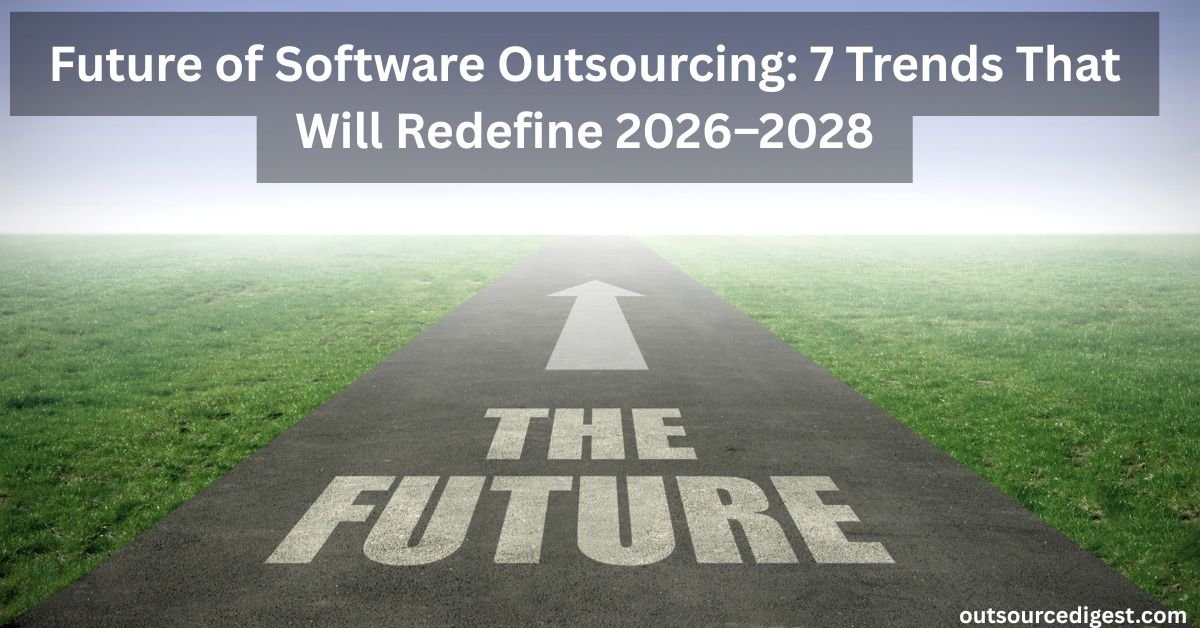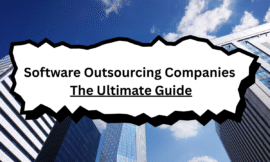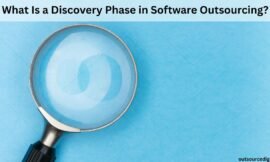The software outsourcing trends 2026 are about to redefine the way businesses approach technology partnerships. What used to be a cost-saving exercise is now a critical growth strategy for startups, mid-sized businesses, and global enterprises. Between 2026 and 2028, outsourcing will no longer be limited to staff augmentation. Instead, it will merge with AI-driven delivery models, cybersecurity partnerships, and nearshore collaborations that bring talent closer to the client.
According to market forecasts, IT outsourcing is projected to surpass hundreds of billions of dollars globally before the end of the decade. With this rapid growth comes new risks, evolving pricing models, and stricter regulations. In this article, we will explore seven powerful trends that every business leader should monitor to make smarter outsourcing decisions over the next three years.
Trend 1 — Generative AI Becomes a Delivery Multiplier
Generative AI is no longer a futuristic concept — it’s embedded in the daily workflows of outsourced development teams. AI copilots accelerate code generation, automate documentation, and reduce testing cycles. Research shows AI-assisted development can cut engineering effort on routine tasks by up to 40%.
However, speed comes with new challenges. AI-generated code introduces unique vulnerabilities, compliance issues, and hidden bugs. By 2026, companies will expect outsourcing partners to demonstrate AI governance frameworks — including human-in-the-loop reviews, automated code scanning, and transparent reporting of AI use.
Action point: When outsourcing, ask vendors for their AI policy, secure development lifecycle (SDLC) processes, and evidence of using AI responsibly.
Trend 2 — Outcome-Based Contracts Replace Hourly Billing
For years, outsourcing contracts were dominated by time-and-materials models. That’s changing fast. By 2026, more clients will demand outcome-based agreements where vendors are paid based on delivered features, system uptime, or measurable business results.
This shift reduces financial risk for clients and rewards vendors who can deliver quality outcomes consistently. It also pushes outsourcing companies to productize their services into “platform engineering as a service” or “AI development pods.”
Action point: Negotiate contracts that link payments to KPIs such as feature delivery time, cost per release, or customer satisfaction scores.
Trend 3 — Nearshore Outsourcing Gains Momentum
The outsourcing landscape is shifting geographically. While offshore destinations like India and the Philippines remain strong, nearshore outsourcing is accelerating. For U.S. companies, countries such as Mexico, Colombia, and Poland are becoming attractive due to:
- Time zone alignment
- Cultural compatibility
- Strong English proficiency
- Legal and data protection improvements
This trend is especially relevant for agile teams that need real-time collaboration. Nearshore partners reduce delays caused by time zone gaps and provide quicker feedback loops.
Action point: Evaluate nearshore destinations for high-collaboration tasks, while using offshore teams for specialized technical work.
Struggling to choose between nearshore and offshore outsourcing in 2025? You’re not alone. With rising costs, talent shortages, and global shifts in tech hubs, the decision has never been more critical. This guide, “Nearshore vs Offshore Outsourcing: Which Is Better in 2025?” breaks down the pros and cons of each model so you can make the smartest move for your business today.
Trend 4 — Cybersecurity Outsourcing Becomes Non-Negotiable
Global cybercrime damages are projected to exceed $10 trillion annually by 2025 — and outsourcing is becoming a frontline defense. Businesses increasingly rely on external Managed Detection and Response (MDR) providers, security testing firms, and compliance experts.
Software outsourcing companies are also adding cybersecurity services as a core part of their offering. By 2026, it will be standard for clients to demand:
- Continuous monitoring and incident response
- Secure coding practices
- Compliance with frameworks like ISO 27001 or SOC 2
Action point: Choose outsourcing partners who integrate security into their delivery model, not as an afterthought.
Trend 5 — Cloud-Native & Platform Engineering Dominate
Cloud-native development is no longer optional — it’s the default. As businesses scale, they need outsourcing partners who can provide platform engineering services:
- Infrastructure as code (IaC)
- Cost-optimized cloud architectures
- Reusable microservices
- Observability and monitoring frameworks
By 2028, outsourcing vendors who lack strong cloud-native capabilities will struggle to win contracts.
Action point: During vendor evaluation, review case studies that demonstrate successful cloud migration, cost optimization, and DevOps maturity.
Trend 6 — Blended Talent Models Replace Pure Staff Augmentation
Outsourcing in 2026 will not just be about hiring individual developers. The preferred model will be blended pods — cross-functional squads including developers, QA, DevOps, and product managers — embedded within the client’s organization.
This model provides:
- Faster ramp-up times
- Stronger accountability
- Reduced turnover risks
- Improved collaboration
For startups, pods offer a way to scale quickly without building large in-house teams.
Action point: Include onboarding KPIs, pod stability clauses, and knowledge transfer requirements in your contract.
Trend 7 — Regulation and Geopolitics Shape Sourcing Decisions
Outsourcing is increasingly impacted by external factors:
- Data protection laws (like GDPR and U.S. state-level privacy acts)
- Tax regulations on overseas outsourcing
- Geopolitical risks (trade restrictions, sanctions, and shifting alliances)
Between 2026 and 2028, businesses will need to factor regulatory risk into their outsourcing strategy. Choosing vendors with strong compliance capabilities will become a differentiator.
Action point: Add a regulatory risk review to your procurement process and include renegotiation clauses in case of sudden policy changes.
Practical Checklist for Buyers
- AI governance: Ensure vendors disclose AI tools and security checks.
- KPIs over hours: Push for outcome-based contracts.
- Nearshore for collaboration: Use Latin America or Eastern Europe for overlapping time zones.
- Security-first approach: Make MDR and secure SDLC mandatory.
- Cloud maturity: Confirm vendors’ expertise in IaC, DevOps, and observability.
- Blended pods: Favor cross-functional teams over individual staff augmentation.
- Regulatory resilience: Prepare for tax or compliance changes.
Conclusion
The software outsourcing trends 2026 point to a future where outsourcing is no longer just about cutting costs. Instead, it’s about building resilient, secure, and AI-enabled partnerships that drive business growth. Companies that adopt nearshore delivery, demand outcome-based contracts, and prioritize security will be ahead of the curve.
As we move into 2026–2028, the organizations that succeed will be those that treat outsourcing not as a vendor relationship, but as a strategic partnership aligned with long-term business goals.
For a deeper foundation on how outsourcing works and how to select the right vendor, check our guide: Software Outsourcing: The Complete Beginner’s Guide (2025).







